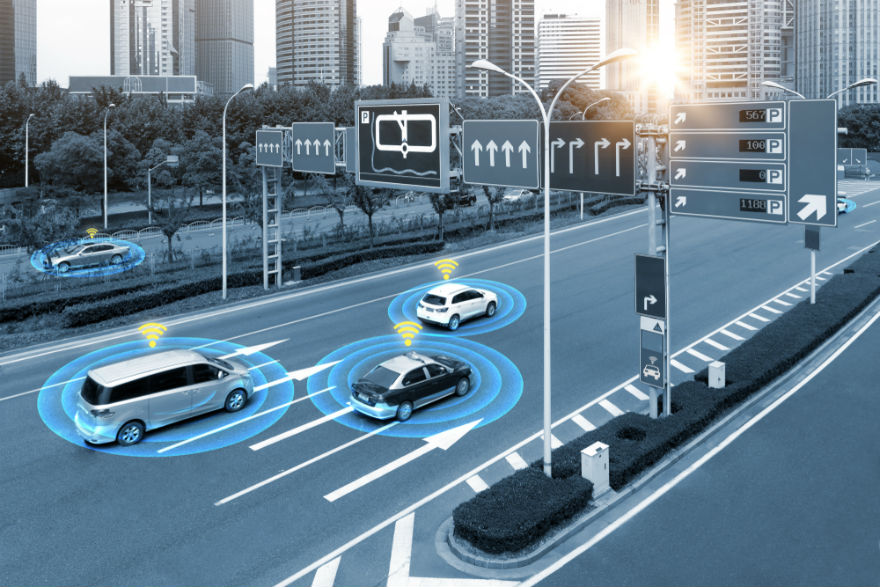THE Autonomous Vehicle Revolution is truly underway with the self-driving vehicle market set to reach 71 million units by 2030 while Chinese manufacturers promise to dedicate 10% of their total production to autonomous vehicles by then.
OEMs are already building product roadmaps for this revolution but what about ‘further out’ innovations like flying cars and ‘hyperloop’ underground urban mass transit systems? Is it too early to take these plans seriously?
Tesla, Google and Uber have big aspirations and access to vast research and development budgets which are moving vehicular innovation along at a rapid pace. You may have read about Uber and Tesla’s public spat last year.
Uber’s then CEO provocatively asserted ‘why go to the effort of building tunnels for a hyperloop (Tesla’s big push) when you can take to the sky?’.
Since Elon Musk’s Space X declaration in 2012 that Hyperloop will be the fifth mode of transport, using pressurised vacuum pods to transport passengers at high speeds via a sustainable tunnel network, eight hyperloops are in development around the world.
Ryan Kelly, Head of Marketing for Virgin’s Hyperloop One – just one of several players involved – says the company is confident of launch by 2030.
Focussing on ride sharing aircraft
The Uber Elevate team, on the other hand, has focused its efforts on designing an electric VTOL (Vertical Take Off and Landing) ride sharing aircraft to alleviate ground congestion. Uber plans to launch its flying Uber Air taxi service via a three-city pilot in 2020 with a launch of commercial VTOL operations as early as 2023.
To put these financial stakes into figures: Uber spent a whopping $457 million last year on the research and development of autonomous vehicles, flying cars (eVTOL) and other ‘technology programs’ out of a total spend of more than $1.5 billion in 2018. Tesla quoted a $1.5 billion investment in research and development last year.
Looking beyond these tech megaliths, current market offerings include:
- Dutch manufacturer PAL-V has unveiled Liberty, the world’s first production flying car on a limited run of 90.
- Aerospace giant Boeing recently completed the first test flight of its autonomous Passenger Air Vehicle (PAV) prototype as part of its NeXt programme.
- California-based start-up, Opener announced that its flying car – the BlackFly – will hit the market this year.
- Car manufacturer Audi, the aviation giant Airbus, and the design company Italdesign have joined forces to create a futuristic flying taxi prototype called ‘Pop Up Next’ – a cross between a self-driving electric car and a passenger drone.
It seems a matter of when, not if, flying cars will start buzzing over our heads. Investment bank, Morgan Stanley estimates that the value of the global autonomous urban aircraft market could reach over $1.5 trillion by 2040.
Growth through economic and IT advances
This growth will be facilitated by economic and IT advances including Artificial Intelligence, innovative manufacturing processes, improved battery efficiency, increased computing power, together with enhanced connectivity and satellite communication enabled by 5G networks.
Cars are increasingly becoming smart, internet-connected devices with sensor-driven automatic braking and self-park capabilities.
LiDAR offers accurate 3D mapping of the environment around autonomous vehicles now being tested in the US, China and the Middle East. Within 15 years it seems likely that battery-powered electric and hybrid vehicles will make up more than half of the UK’s car parc.
So, what does this all mean for your car dealership planning for future success?
- There is a potential to access a wealth of driving behaviour and onboard diagnostics to offer a proactive, personalised service geared to replacing parts, re-tuning engines and (in the future) replacing batteries just before they start to affect the car’s performance and fuel economy.
2. Shared mobility service offerings will create opportunities to secure servicing contracts for large fleets run by those companies. MaaS businesses like Drover are already offering dealerships opportunities to derive revenues from under-utilised used stock they are holding. Perhaps more dealerships will decide to dedicate a percentage of their own approved used cars to MaaS/rental stock.
3. It’s also valuable to be associated with the exciting innovation that comes with the ‘future of the car’ debate. Why not work with your manufacturer(s) to find out exactly what their roadmap is and present this vision to your customers – perhaps drawing them into the dealership by offering a Virtual Reality ‘test drive’ of your OEM’s flying car of the future?
Many of your future customers are likely to be influenced if you can show that your manufacturer(s) has a concrete plan to lead rather than follow vehicle innovation trends.
Use the technology of tomorrow as a great talking point for selling cars today; while inspiring their loyalty for their next vehicle purchase in a few years’ time, whatever that vehicle of the future might be.







Leave A Comment